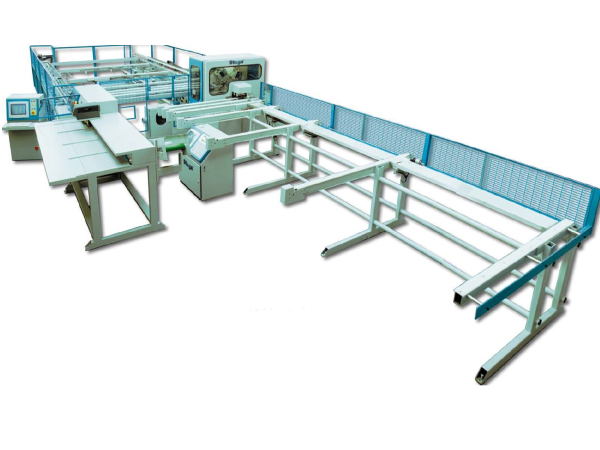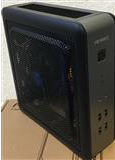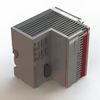| [version en cours de rédaction] | [version en cours de rédaction] |
(Page créée avec « {{Tuto Details |Main_Picture=TM003_Flowline_Overview_flowline.jpg |Main_Picture_annotation={"version":"2.4.6","objects":[{"type":"image","version":"2.4.6","originX":"left"... ») |
|||
| (2 révisions intermédiaires par le même utilisateur non affichées) | |||
| Ligne 2 : | Ligne 2 : | ||
|Main_Picture=TM003_Flowline_Overview_flowline.jpg | |Main_Picture=TM003_Flowline_Overview_flowline.jpg | ||
|Main_Picture_annotation={"version":"2.4.6","objects":[{"type":"image","version":"2.4.6","originX":"left","originY":"top","left":2,"top":45,"width":1475,"height":831,"fill":"rgb(0,0,0)","stroke":null,"strokeWidth":0,"strokeDashArray":null,"strokeLineCap":"butt","strokeDashOffset":0,"strokeLineJoin":"miter","strokeMiterLimit":4,"scaleX":0.41,"scaleY":0.41,"angle":0,"flipX":false,"flipY":false,"opacity":1,"shadow":null,"visible":true,"clipTo":null,"backgroundColor":"","fillRule":"nonzero","paintFirst":"fill","globalCompositeOperation":"source-over","transformMatrix":null,"skewX":0,"skewY":0,"crossOrigin":"","cropX":0,"cropY":0,"src":"https://stuga.dokit.app/images/4/4c/TM003_Flowline_Overview_flowline.jpg","filters":[]}],"height":450.12126111560224,"width":600} | |Main_Picture_annotation={"version":"2.4.6","objects":[{"type":"image","version":"2.4.6","originX":"left","originY":"top","left":2,"top":45,"width":1475,"height":831,"fill":"rgb(0,0,0)","stroke":null,"strokeWidth":0,"strokeDashArray":null,"strokeLineCap":"butt","strokeDashOffset":0,"strokeLineJoin":"miter","strokeMiterLimit":4,"scaleX":0.41,"scaleY":0.41,"angle":0,"flipX":false,"flipY":false,"opacity":1,"shadow":null,"visible":true,"clipTo":null,"backgroundColor":"","fillRule":"nonzero","paintFirst":"fill","globalCompositeOperation":"source-over","transformMatrix":null,"skewX":0,"skewY":0,"crossOrigin":"","cropX":0,"cropY":0,"src":"https://stuga.dokit.app/images/4/4c/TM003_Flowline_Overview_flowline.jpg","filters":[]}],"height":450.12126111560224,"width":600} | ||
| − | |Description=<translate>PC network configuration of the Flowline following a | + | |Description=<translate>PC network configuration of the Flowline following using a Beckhoff TwinCAT3 system which controls both the saw and windows side.</translate> |
|Categories=Specification | |Categories=Specification | ||
|Tags=FlowlineD, PC, Configuration | |Tags=FlowlineD, PC, Configuration | ||
}} | }} | ||
| − | <translate> | + | <translate>Following a second wave of obsolescence, this upgrade replaces all the control components with a Beckhoff control system. The major change to this system is that it uses one central system to control both sides of the machine. |
| − | |||
| + | {{#annotatedImageLight:Fichier:Netmatters CNC PC.png|0=115px|hash=|jsondata=|mediaClass=Image|type=frameless|align=right|src=https://stuga.dokit.app/images/d/d4/Netmatters_CNC_PC.png|href=./Fichier:Netmatters CNC PC.png|resource=./Fichier:Netmatters CNC PC.png|caption=|size=115px}} | ||
| + | A front end Pc is used to provide the user interface, which has a desktop split across two screens, one for each side of the machine. The front end software launches two UI forms, which has a slight downside in that two operators cannot use it at exactly the same time | ||
| − | Both PCs | + | Uses a Gapton Computers or Netmatters supplied "CNC" machine |
| + | |||
| + | {{#annotatedImageLight:Fichier:PC Configuration - Flowline D C0001013.jpg|0=100px|hash=|jsondata=|mediaClass=Image|type=frameless|align=right|src=https://stuga.dokit.app/images/c/c0/PC_Configuration_-_Flowline_D_C0001013.jpg|href=./Fichier:PC Configuration - Flowline D C0001013.jpg|resource=./Fichier:PC Configuration - Flowline D C0001013.jpg|caption=|size=100px}} | ||
| + | A "Back End" Beckhoff PC is used to provide the PLC control systems, running TwinCAT3. | ||
| + | |||
| + | Both PCs need to be on the same network | ||
| + | |||
| + | Front end PC needs TwinCAT3 Engineering Runtime installed, which allows communication to TwinCAT on the back end PC, and installs the System Manager to allow configuration and diagnostics of the front end. | ||
| + | |||
| + | The front end PC needs to have a "Route" set up to the Back end PC for TwinCAT to work | ||
| + | <br /> | ||
| + | {| class="wikitable" | ||
| + | |+PC Naming | ||
| + | !Front End | ||
| + | !Back End | ||
| + | !Optional - Diagnostic PC | ||
| + | |- | ||
| + | |F0nn | ||
| + | where nn is the build number | ||
| + | |F0nnBE | ||
| + | where nn is the build number | ||
| + | |F0nnD | ||
| + | |} | ||
| + | {{Info|...The Diagnostic PC is sometimes added to give a permanent desktop that can be connected via teamviewer. This allows remote real time diagnostics withvideo footage and TwinCAT3 System Manager}} | ||
{| class="wikitable" | {| class="wikitable" | ||
|+Folder Structure | |+Folder Structure | ||
| − | ! | + | !Setup Files |
| − | ! | + | !Front End Software |
| − | |||
| − | |||
|- | |- | ||
| − | |*.mul initialisation files<br /><syntaxhighlight lang="dosbatch"> | + | |*.mul and *.saw initialisation files<br /><syntaxhighlight lang="dosbatch"> |
| − | c:\ | + | c:\ddrive\ |
| − | |||
| − | |||
| − | |||
</syntaxhighlight> | </syntaxhighlight> | ||
|written in vb.net <br /><syntaxhighlight> | |written in vb.net <br /><syntaxhighlight> | ||
c:\multi\winmulti.exe | c:\multi\winmulti.exe | ||
</syntaxhighlight> | </syntaxhighlight> | ||
| − | + | |}Location of folder structure of MH side can be changed in the local masterdir.saw. See [https://stuga.dokit.app/w/Masterdir_File https://stuga.dokit.app/wiki/Masterdir_File] | |
| − | + | {{Info|...The default folder used is called "DDRIVE" for historical reasons. Some other machines have aBeckhoff PC as the front end which has limited HDD space. In this case, a secondary PC was set up for diagnostics / storage (sometimes referred to as the "Camera PC"). The DDRIVE was set up as a shared folder on the Camera PC to store all machine data and diagnostics, which was mapped as "D:\" from the front end}} | |
| − | |||
| − | |}Location of folder structure of MH | ||
<br /> | <br /> | ||
| − | =PCs= | + | =PCs=</translate> |
| − | |||
| − | |||
| − | |||
| − | |||
| − | |||
| − | |||
| − | |||
{{PageLang | {{PageLang | ||
| + | |Language=en | ||
|SourceLanguage=none | |SourceLanguage=none | ||
|IsTranslation=0 | |IsTranslation=0 | ||
| − | |||
}} | }} | ||
{{AddComments}} | {{AddComments}} | ||
Version actuelle datée du 12 novembre 2019 à 16:36
PC network configuration of the Flowline following using a Beckhoff TwinCAT3 system which controls both the saw and windows side.
Sommaire
Following a second wave of obsolescence, this upgrade replaces all the control components with a Beckhoff control system. The major change to this system is that it uses one central system to control both sides of the machine.
A front end Pc is used to provide the user interface, which has a desktop split across two screens, one for each side of the machine. The front end software launches two UI forms, which has a slight downside in that two operators cannot use it at exactly the same time
Uses a Gapton Computers or Netmatters supplied "CNC" machine
A "Back End" Beckhoff PC is used to provide the PLC control systems, running TwinCAT3.
Both PCs need to be on the same network
Front end PC needs TwinCAT3 Engineering Runtime installed, which allows communication to TwinCAT on the back end PC, and installs the System Manager to allow configuration and diagnostics of the front end.
The front end PC needs to have a "Route" set up to the Back end PC for TwinCAT to work
| Front End | Back End | Optional - Diagnostic PC |
|---|---|---|
| F0nn
where nn is the build number |
F0nnBE
where nn is the build number |
F0nnD |
| Setup Files | Front End Software |
|---|---|
*.mul and *.saw initialisation filesc:\ddrive\
|
written in vb.net c:\multi\winmulti.exe |
Location of folder structure of MH side can be changed in the local masterdir.saw. See https://stuga.dokit.app/wiki/Masterdir_File
PCs
Draft



 Français
Français English
English Deutsch
Deutsch Español
Español Italiano
Italiano Português
Português